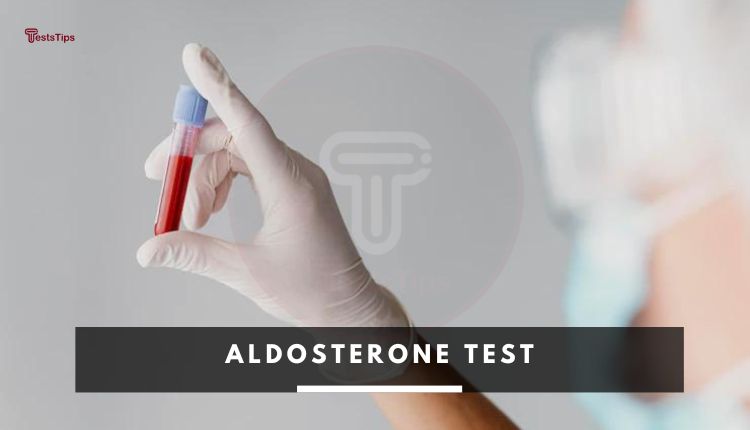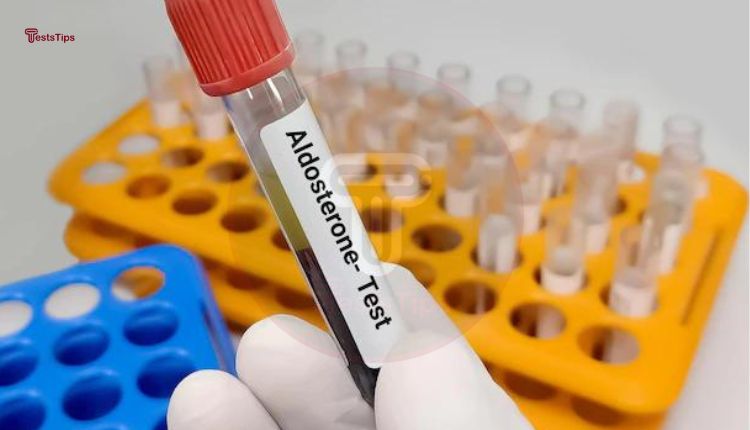Aldosterone Test
Aldosterone Test - ALDS; Purpose, Procedure, and Results
Aldosterone Test also named ALDS, is performed in blood or urine. What is its purpose, and procedures, and what are the indications of its results?

Table of Contents
The Aldosterone Test is done to measures the blood aldosterone levels; to detect hyperaldosteronism (aldosterone overproduction) or hypoaldosteronism (underproduction of aldosterone).
What Is an Aldosterone Test?
Aldosterone is a hormone made by the adrenal glands, which are small, triangle-shaped glands located on top of the kidneys. Renin commonly stimulates the adrenal gland to start releasing aldosterone. Aldosterone’s primary function is to regulate blood pressure.
Also, blood aldosterone helps regulate sodium and potassium in the bloodstream, such as the kidneys, colon, and urinary system. When the body is attempting to conserve fluid and salt, high levels of both renin and aldosterone are normally present (sodium). When an aldosterone-producing tumor is present, your aldosterone (ALD) level will be high while your renin level will be low.
An aldosterone test measures the level of aldosterone hormone in your blood. The test is typically a blood test, but a 24-hour urine collection test can also be performed depending on how your doctor wants to measure your aldosterone levels.
Brief Description of serum Aldosterone Test
| Other names | ALDS test, Serum aldosterone test |
| Test purpose | Measures the amount of aldosterone in blood |
| preparation | You may be asked to stop certain medications or foods for at least 2 weeks before being tested. |
| specimen | Serum, or 24-hour urine sample |
| Rejection Criteria | EDTA plasma |
| Reference Range |
|
| Methodology | Liquid Chromatography-Tandem Mass Spectrometry (LC-MS/MS) |
Purpose of Aldosterone Test
Your doctor may order an aldosterone test for a variety of reasons, including:
- Aid in the diagnosis of primary or secondary aldosteronism (a condition in which the adrenal glands produce an excessive amount of ALD).
- Assist in the diagnosis of adrenal insufficiency or tumors on it, which causes the adrenal glands to produce insufficient ALD.
- To investigate the causes of hypertension or low potassium levels.
- To determine the severity of orthostatic hypotension, or low blood pressure while standing.
In most cases, an aldosterone test will be combined with other tests to determine whether your body is producing too much or too little of the hormone.
Other tests that may be performed include a renin hormone test and an ACTH (adrenocorticotropic hormone) stimulation test.
“Related: Alpha Fetoprotein; AFP Test“
Preparation for aldosterone testing
Your doctor may request that you have this test at a specific time of day because ALD levels fluctuate throughout the day. Morning levels are the highest.
Your doctor may also request that you:
- reduce the amount of sodium you consume (sodium restriction diet)
- Avoid licorice (licorice has aldosterone-like properties). These factors can affect ALD levels.
- It’s also important to keep in mind that stress can temporarily increase ALD.
- Stay away from strenuous exercise.
- Posture is also crucial. You should be upright for at least 2 hours before the test.
- With severe illness, aldosterone levels drop to very low levels, so testing should be avoided.

Complications from medication
A number of medications can have an impact on ALD. Inform your doctor about all medications you are currently taking, this includes supplements as well as over-the-counter medications.
Medications that may have an effect on ALD include:
- NSAIDs (nonsteroidal anti-inflammatory drugs), such as ibuprofen.
- Diuretics (water pills).
- Oral contraceptives (birth control pills).
- ACE inhibitors, such as benazepril.
- Steroids, such as prednisone.
- Beta-blockers, such as bisoprolol.
- Calcium channel blockers, such as amlodipine.
- Lithium.
- Heparin.
- Propranolol.
How aldosterone testing is done?
Aldosterone (ALD) levels can be measured in both blood and urine.
A blood test involves a health care professional drawing blood from a vein in your arm with a small needle. Following needle insertion, a small amount of blood is collected in a test tube or vial.
You may feel a slight sting when the needle is inserted or removed. This usually takes under five minutes.
The concentration of ALD in your blood varies depending on whether you are standing or lying down.
Your healthcare provider may request that you collect all urine during a 24-hour period for an ALD urine test. You will be provided with a container to collect your urine as well as instructions on how to collect and store your samples.
A 24-hour urine sample test typically consists of the following steps:
- In the morning, Unload your bladder and flush the urine away. Keep track of the time.
- Save all urine passed in the container provided for the next 24 hours.
- Keep your urine container in the refrigerator or an ice-filled cooler.
- As directed, return the sample container to your health provider’s office or the laboratory.
Is there any risk in the test?
A blood test poses very little risk, but most symptoms resolve quickly.
The following are some of the risks of having your blood drawn:
- Multiple needle pricks as a result of difficulty finding a vein and excessive bleeding.
- Fainting or lightheadedness.
- Hematoma (blood pooling under the skin).
- Infection at the site of the puncture.
There are no known risks associated with Aldosterone Test in urine.
Aldosterone test results
If your results show that you have higher than normal levels of aldosterone (ALD), you may have:
- Primary aldosteronism (Conn syndrome): This disorder is caused by a tumor or other problem in the adrenal glands that causes the glands to produce an excessive amount of ALD.
- Secondary aldosteronism: This occurs when a medical condition in another part of the body causes the adrenal glands to produce excessive ALD. High blood pressure and heart, liver, and kidney disease are examples of these conditions.
- Preeclampsia: a form of high blood pressure that occurs in pregnant women.
- Barter syndrome: a rare birth defect that affects the ability of the kidneys to absorb sodium.
If your results show that you have low levels of ALD, you may have:
- Addison disease: a type of adrenal insufficiency caused by adrenal gland damage or other problems. As a result, there is insufficient ALD production.
- Secondary adrenal insufficiency: a disorder caused by a pituitary gland problem, If these pituitary hormones are insufficient, the adrenal glands will not produce enough ALD.
There are treatments available if you are diagnosed with one of these disorders. Your treatment may include medications, dietary changes, and/or surgery, depending on the disorder.
Aldosterone/renin ratio (ARR)?
An aldosterone/renin ratio (ARR) is a screening test used to detect primary aldosteronism in hypertensive patients at high risk. To calculate the ratio, blood levels of aldosterone and renin are measured, and the aldosterone result is divided by the renin result. The ARR is regarded as the most reliable screening for primary aldosteronism, though it is difficult to interpret.
Related tests
There are other tests that may be performed with ALD tests including:
- Renin hormone test.
- ACTH stimulation test.
- Cortisol.
- Electrolytes, and Anion Gap.
- Potassium.
- Podium.
When you receive your results, remember that the reference range listed on the test serves as a guide to what is going on inside your body. When diagnosing you, your doctor will consider a variety of factors, including your medical history and a list of symptoms.
